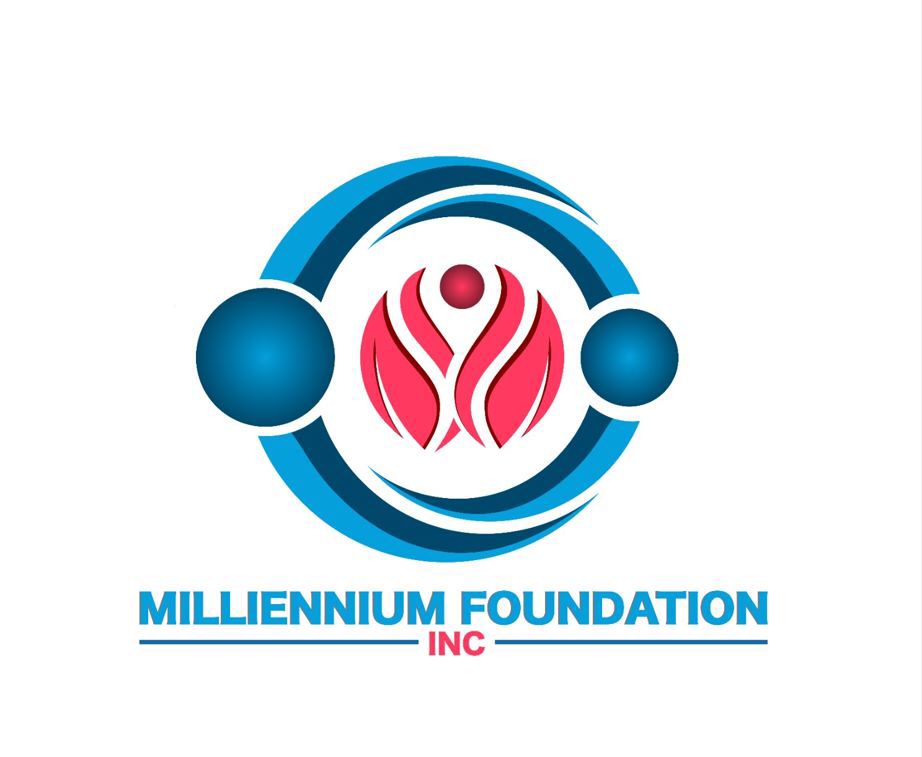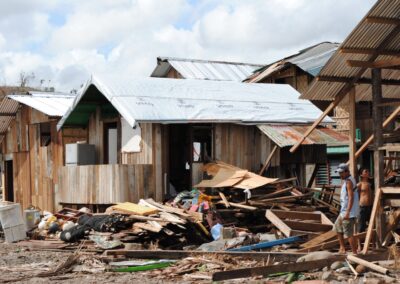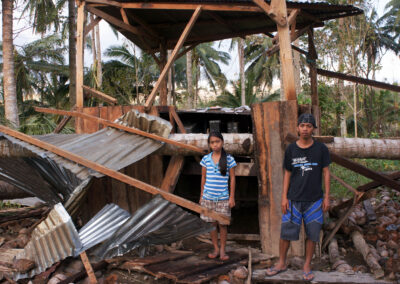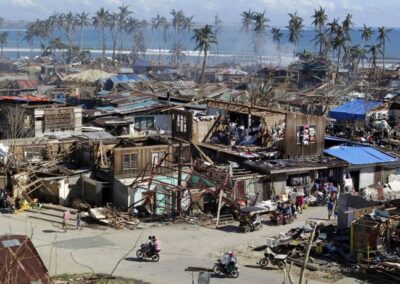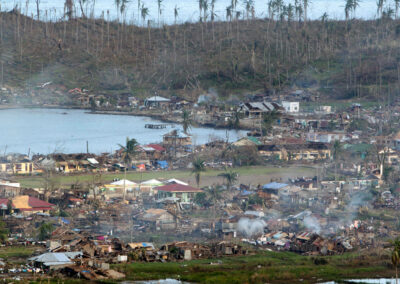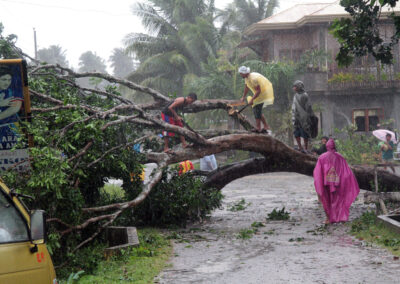Typhoon Bopha—known locally as Pablo—made landfall three times in the Philippines in December 2012, spreading destruction across 30 provinces.
The islands are no stranger to typhoons and other severe weather events, but Bopha was different; Mindanao, the area of initial impact, typically does not typically see typhoons of this magnitude. In all, 5.4 million people were affected, and at least 2,000 died or missing.
Despite the devastation from Bopha, the Philippines is one of the most prepared countries. The World Disaster Report 2012—a collaborative effort among the United Nations University’s Institute for Environment and Human Security, the German Alliance for Development Works, and The Nature Conservancy—labeled the country as the third most disaster-prone nation in the world. But it also was the highest-rated on adaptation measures. President Benigno Aquino announced plans in August 2012 to implement high-priority flood control measures in Manila and Lake Laguna over a six-month period.
Even so, no preparation could fully prevent damage from Bopha. The combination of winds and heavy rains crumpled houses, leaving many homeless. Emergency shelters have been established, but due to the remote nature of the area most affected, many were unable to receive aid quickly. Farmland—a source of income for the majority of the region—was devastated. Immediately following the typhoon, officials estimated that 18 bridges and 16 roads were damaged, leaving some areas accessible only by sea or air.
Bopha was the 16th typhoon—and most powerful—to hit the Philippines in 2012. Wind strengths reached 138 miles per hour and the rainfall reached nearly 20 inches in a 24-hour period. That was double the rainfall and three times the wind strength of Tropical Storm Washi, which hit northern Mindanao in December 2011. That storm claimed more than 1,500 lives. (A “typhoon” is a tropical cyclone/hurricane in the Indian or Western Pacific oceans, but Washi was not designated a typhoon because of its wind speed measurements.)
The region has been beset by military clashes for more than four decades, and Bopha hit just as hope appeared on the horizon. In October 2012, the government and the Moro Islamic Liberation Front reached a framework agreement, setting the stage for a new basic law for the region. The United Nations has created a Humanitarian Action Plan to assist with the transition.
